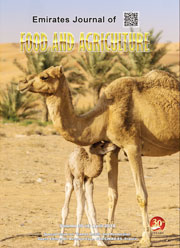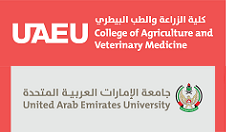Effect of fungicide treatment and nitrogen fertilisation on the yield of two breeding types of winter oilseed rape cultivars
DOI:
https://doi.org/10.9755/ejfa.2023.v35.i4.3011Abstract
The effect of three fungicide treatment programmes and the level of spring nitrogen fertilisation on the seed yield of two types of
cultivars of Brassica napus L. sown at two different seeding rates was studied in a field experiment. The subject of the study was an
open-pollinated cultivar ‘Casoar’ and a restored hybrid cultivar ‘Visby’. Three plant protection programmes, two levels of spring nitrogen
fertilisation (160 and 220 kg N⋅ha1), and two different seeding rates for each cultivar (‘Visby’—50 and 70 seeds⋅⋅m2; ‘Casoar’—60
and 80 seeds⋅m2) were included. The most intensive protection programme comprised three fungicide treatments: first in autumn at
the six-leaves-unfolded stage—BBCH 16, second in spring at the stem elongation stage—BBCH 33, and third at the full flowering
stage—BBCH 65. One of two less intensive programmes of plant protection included fungicide application in autumn at the sixleaves-unfolded stage—BBCH 16 and at the full flowering stage—BBCH 65, while the second included fungicide application in spring
at the stem elongation stage—BBCH 33 and at the full flowering stage—BBCH 65. The effectiveness of the protection programmes
and nitrogen fertilisation was influenced by the intensity of abiotic stress factors. The average yield from the plots protected against
pathogens was significantly higher than that from the untreated plots. The increase of nitrogen fertilisation from 160 to 220 kg⋅ha1
also caused a significant increase of average seed yield. The yield of cultivar ‘Visby’ was higher and less dependent on the seeding
rate compared to cultivar ‘Casoar’.
Keywords: Winter oilseed rape; Cultivars; Disease control; Nitrogen fertilisation; Seeding rate; Sclerotinia sclerotiorum;
Leptosphaeria spp.; Alternaria spp. Botrytis cinerea add more keywords
Downloads
Published
Versions
- 2023-05-15 (4)
- 2023-05-11 (3)
- 2023-05-07 (2)
- 2023-03-02 (1)
How to Cite
Issue
Section

This work is licensed under a Creative Commons Attribution-NonCommercial 4.0 International License.










 .
. 